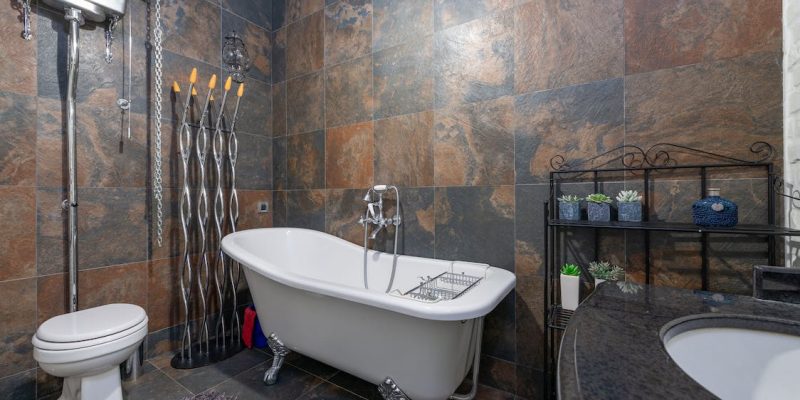If you’ve ever had to stand under a weak stream of water coming out of your bathroom faucet, you know the frustration that comes with it.
A low stream of cold water can make washing your hands or brushing teeth feel like a chore. But before you call a plumbing specialist, there are a few things you can try to fix the issue yourself.
In this blog post, we’ll walk you through some common causes of low cold water pressure in the bathroom and show you how to troubleshoot them.
Keep reading for tips on how to get back to enjoying a strong stream of water from your taps!
Visit this website to learn about the top HVAC service in Northern Virginia and the surrounding areas.
Inspect your sink for mineral buildup and remove any debris
Mineral deposits can build up on your faucet over time which reduces water pressure and creates an unsightly mess. Luckily, it’s easy to remove these deposits with a little vinegar and elbow grease if you’re experiencing low cold water pressure in bathroom sink only.
First, unscrew the faucet head from the pipe. Next, fill a small plastic bag with vinegar and attach it to the faucet with a rubber band.
Let everything sit overnight, then remove the plastic bag and scrub away any remaining deposits with an old toothbrush. Finally, rinse off the sink and screw it back into place. This should help with the low cold water pressure in bathroom sink only.
By taking a few minutes to clean your faucet regularly, you can help prevent mineral buildup and help prevent low water pressure in bathroom sink (cold water only) issues.
Tighten the screws on your shower arm to ensure a tight seal
If you notice your cold water pressure is low in bathroom spaces, it might be time to tighten some screws. Start by checking the most obvious spot: the connection between the arm and the showerhead. If the seal around this joint is loose, water can easily escape, causing a drip. To fix this, simply remove the showerhead and tighten the screws on the arm. You may need to use a wrench or pliers to get a tight fit.
Once you’ve tightened the screws, put the showerhead back on and turn on the water to check for leaks. If there are still leaks, then you’ll need to replace the washers and O-rings. These parts can wear out over time, causing water to leak through even when the screws are tight.
Fortunately, they’re inexpensive and easy to find at your local hardware store. With a little effort, you can soon have a sealed shower that doesn’t waste water.
Adjust the water pressure regulator if necessary
If you’re noticing that your home’s water pressure isn’t what it used to be, it might be time to check the water pressure regulator. This device helps to control the amount of water flowing through your home’s pipes, and if it’s not working correctly, it can result in low water pressure.
Adjusting the water pressure regulator is a relatively simple task that you can do yourself, and it only takes a few minutes.
First, locate the regulator. It’s usually located near the main water shut-off valve for your home. Then, use a wrench to loosen the adjusting nut until it’s loose enough to turn by hand. Next, turn the adjusting nut clockwise until you reach the desired water pressure.
Once you’ve found the right setting, tighten the adjusting nut so that it’s snug but not too tight, and then test the water pressure to make sure it’s where you want it. If it is, then you’re all done! If not, simply repeat the process until you find the perfect setting.
Check your main water supply line for kinks or leaks
The water main is the supply line that brings water to your home. It is usually buried underground, and it is responsible for delivering water to your taps. Unfortunately, water main lines can sometimes become kinked or leaky. If this happens, it can cause low water pressure or even a complete loss of water pressure.
If you suspect that your water main line may be kinked or leaking, it is important to have it checked by a professional plumber as soon as possible. A kink in the line can often be fixed by simply straightening it out. However, a leak in the line will require more extensive repairs.
In either case, it is best to have a professional take a look at your water main line to ensure that you don’t have to deal with low cold water pressure in bathroom sink spaces.
Flush out your hot water tank to remove any built-up sediment
Over time, hot water tanks can become full of sediment. This sediment can build up on the lower portion of the tank and make its way into the pipes, causing clogs and reducing the flow of hot water.
To avoid this problem, it’s important to flush out your hot water tank on a regular basis. The best way to do this is to attach a hose to the drain valve at the bottom of the tank and open the valve. Allow the water to run until it is clear, then close the valve and disconnect the hose.
Flushing out your hot water tank will help to remove any built-up sediment and keep your hot water flowing freely.
Low cold water pressure in bathroom — Conclusion
If you are experiencing low cold water pressure in bathroom sink only or throughout the entire space, it is important to take action and fix the issue as soon as possible. This can be done by contacting a qualified HVAC specialist who can help diagnose and solve the problem.
By taking care of the issue quickly, you will ensure that your family has access to high-quality water pressure on demand.




















